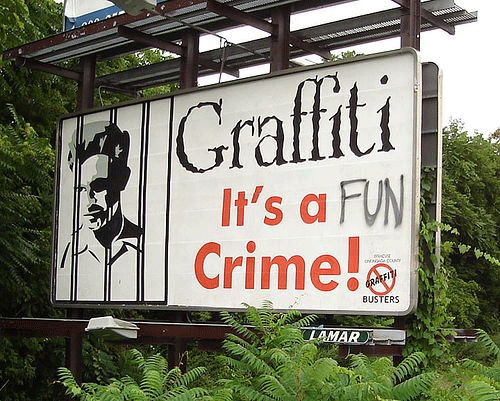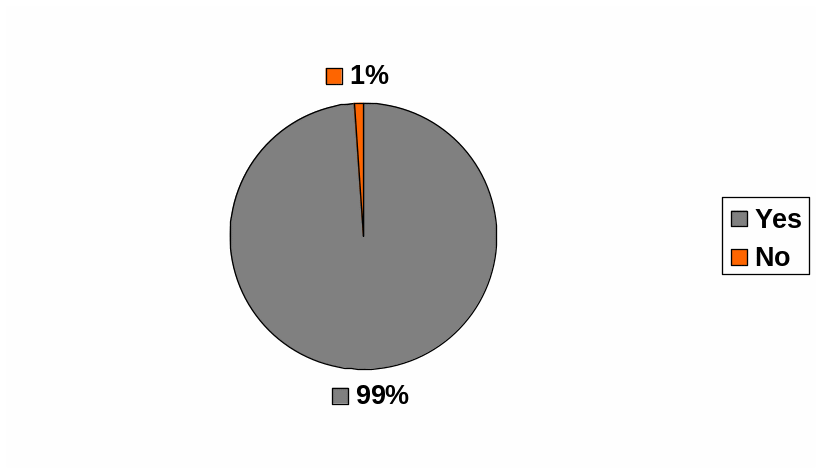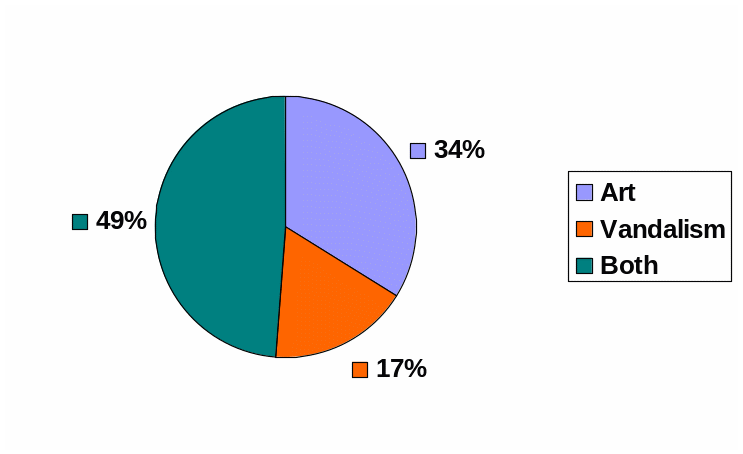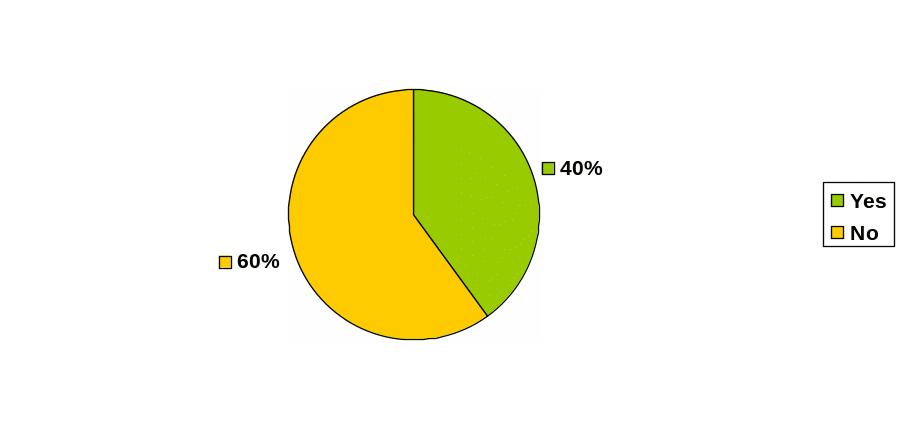
- •Iрпiнь – 2011 table of contents
- •Introduction 4
- •Iрпiнь – 2011 1
- •Introduction
- •1.1 What is graffiti?
- •1.2 Origins and the History of Graffiti
- •Part II
- •2.1 Contemporary trends of graffiti
- •2.2 Graffiti in Ukraine
- •2.3 Main styles of graffiti
- •2.3.1 Tagging
- •2.3.2 Wild style
- •2.4 Is graffiti art?
- •2.4.1 Why is graffiti considered art?
- •2.4.2 The graffiti art culture
- •2.5 Is graffiti vandalism?
- •2.6 Is graffiti legal?
- •Do you think graffiti should be:
- •Glossary of terms
- •Bibliography
- •Attachments
2.6 Is graffiti legal?
“If art like this is a crime, let god forgive me!” - Lee, member of Fabulous Five crew

Questions pertaining to the placement and presentation of graffiti art are the most complex and controversial of all. In this area, the issue of whether graffiti is legal or illegal comes into question. The line defining the two is vague and is determined by a variety of factors. In a technical definition of graffiti under the law, many forms of graffiti are illegal. However, as with any laws regulating the expression and personal choices of people, these laws are subjective in nature.
Graffiti culture is very fragmented on this topic. Artists are pulling at opposite ends, and as a result this creates two very different graffiti subcultures. On one end are “hardcore” graffiti artists, who refuse to ever be paid for their work and strictly do throw-ups on public walls.
On the other end are artists who tend to be more respectful of private property and look to the art for self-expression rather than trying to spread a message to the general public.
Artists who stick to the roots of graffiti art tend to encourage illegal graffiti. As explained in a previous section, the idea of modern graffiti art came from a rejection of authority and the ruling class, turning the worker into a “commodity” that has no personal feelings or need for self-expression. In response, artists took to public walls to express their frustration. Their argument is that the walls are part of the community, and members of the community should decide what is displayed on public walls, not outsiders.
Earlier it was suggested that laws regulating graffiti are subjective in nature.
The fact is that in the eyes of a graffiti artist, a blank wall is more obtrusive and displeasing to the eye than one covered in tags. The image of a large, clean wall is a symbol of a sterilized, tightly regulated environment. The idea is that the community had no say on what would be displayed on the wall, and graffiti artists interpret this as another way to censor and discourage self-expression in the menial, low-class worker.
Arguments in favor of this type of graffiti use the principle of “eye for an eye”: companies are building these huge monolithic structures, so in response one must degrade and vandalize the building. Since they cannot actually make the structure go away, they try and offer at least some sort of reaction that they otherwise would not be able to communicate because they have been disenfranchised of any means of changing the situation.
On the other end are artists that look to art galleries as an opportunity to stray away from negative connotations associated with vandals. They hope that putting their art on canvases or legally commissioned walls will give it more legitimacy and hopefully help it to gain more respect in the art world. They are not as interested in mass communicating an idea to people, but are more interested in creating art that is generally aesthetically pleasing
Definitions of graffiti under the law seem to bend when money is introduced into the equation.
When a community is outraged over the placement of a new commercial billboard, law enforcement officials simply state that nothing can be done about it because the corporation that placed the ad paid for it in full, so therefore it is rightfully theirs. In reality, it belongs to the community just as much as the corporation, since it is in plain view and the public must view it every day, whether it wants to or not.
Graffiti artists claim they have just as much a right to say what they want to say as do corporations. Since street advertising and large-scale billboards have become an acceptable part of the landscape, only the ones with money get to decide what goes where.
It is in the best interests of corporations to only make their voice heard and for law enforcement officials to track down people who put up messages without first purchasing the rights to an area viewable by the public. Artists find this very offensive and an unfair advantage to the upper-class. One interesting subculture of graffiti art that specifically deals with this paradox is “culture-jamming”.
Culture-jammers attempt to sabotage large-scale advertisements with graffiti. There are two ways in which they do this. One is by renting out a billboard by pretending to be a real company, and then putting up a piece that satirizes corporate advertising. The other is by writing over existing corporate advertisements with graffiti that changes the meaning of the ad. The first page of this report features the work of Ron English, currently one of the most famous culture-jammers around.
For graffiti to be on the same level as other traditional forms of art and receive the respect it deserves, however, two things need to occur. One is that the institutionalized art world needs to accept graffiti as a legitimate art form. Once this has occurred, the art world needs to promote a better understanding of what graffiti is and where it comes from.
This is already occurring. Since the end of the 1990s, the Brooklyn Museum of Art and other galleries in New York City have displayed numerous photographic exhibits of graffiti art from around the city. Last month, the Smithsonian Institution announced a new exhibit, “Hip-Hop Won’t Stop: The Beat, The Rhymes, The Life,” which features works by the graffiti elite. The exhibit is currently under construction but will become a permanent part of the American History museum.
It is only a matter of time before hip-hop graffiti artists are being compared to the great artists of the world. Rightly so: graffiti art is one of the most intricate, creative, and an impressive form of art and it is becoming more and more popular each day.
PART III
Surveys
I interviewed about 85 people aged 15 – 23. The results of the surveys indicate that:
Have you ever heard about graffiti?

What do you think Graffiti is?

Have you ever tried graffiti?

